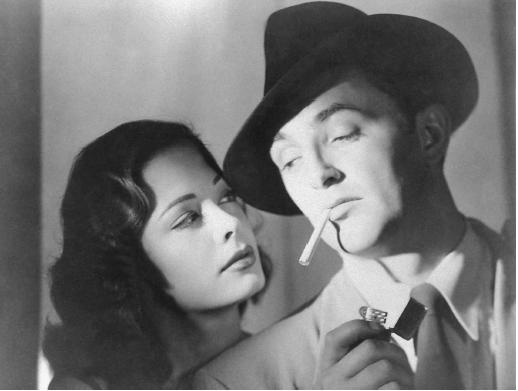
Film noir is the cinematographic expression of disillusionment during the post-WWII era.
Out of the Past (1947) arrived only two years after the war ended, adding to the list of film noirs that offered a sort of escapism to postwar America, the way Hemingway and Steinbeck did with novels. Both mediums depict alienated or dissatisfied characters in realistic settings, however film took the viewers to a different level by offering a visual interpretation to the masses. People could live vicariously through film noir characters. Women could embody the femme fatale persona to escape the routine of their life. Men could envision themselves as razor-sharp protagonists who fell victim to temptation. No matter what their reasoning, people turned to these films to explain the crookedness of their own worlds. The movies offered a cynical view of human nature, which was already being experienced during that time period. The differences was that film noir allowed the menace of man to exist without actually causing harm to anyone.
In a way, the Second World War era has become a kind of film noir in itself. History acts as the protagonist who is damned by fate. Its past (Holocaust, Nazism, total war etc.) tries to be forgotten but comes back to haunt the present (Israeli-Palestinian conflict, dictator uprisings across the globe etc.). The power-corrupt axis leaders represent the crooks, and the tangled and shifting alliances embody the manipulative, double-crossing femme fatale character. Whether that analogy is a stretch or not, the aftermath of such a devastating war was answered by authors and filmmakers alike to help cope with the dejected society of the post WWII world.

1 comment:
wow, way to step back and take history into perspective with the film. I definitely think that movies in general can be an escape for people, and it makes sense that after a world war the escape would need to be quite exagerated for people to be able to really escape into those characters. I'd like to imagine all women and men in the 50s pretending to be these femme fatale and 'razor-sharp' characters- it'd be quite a scene!
oh, and where do you put the accent on cinematographic? I can't figure it out.
Post a Comment